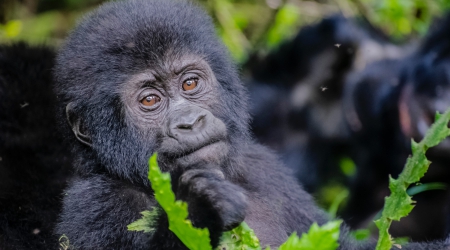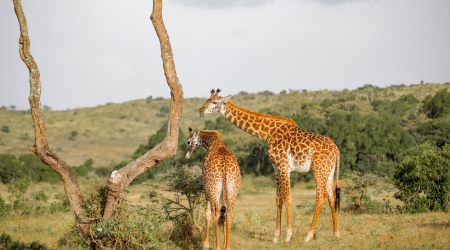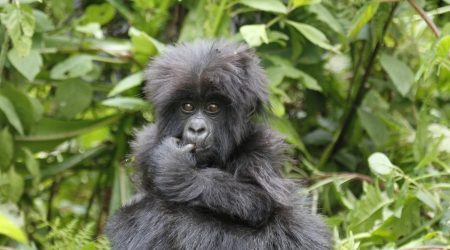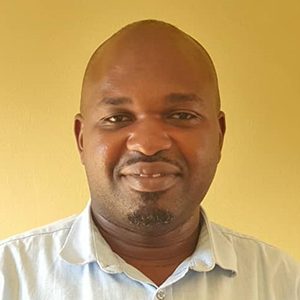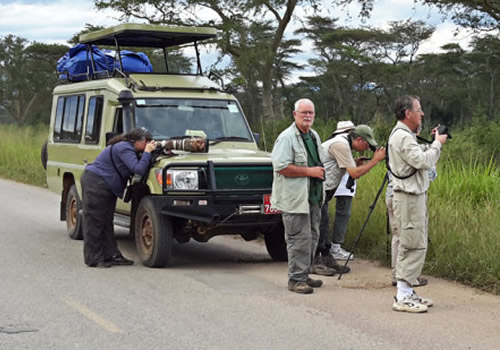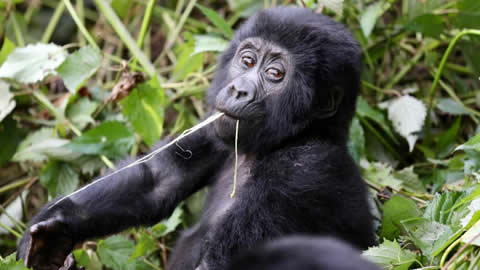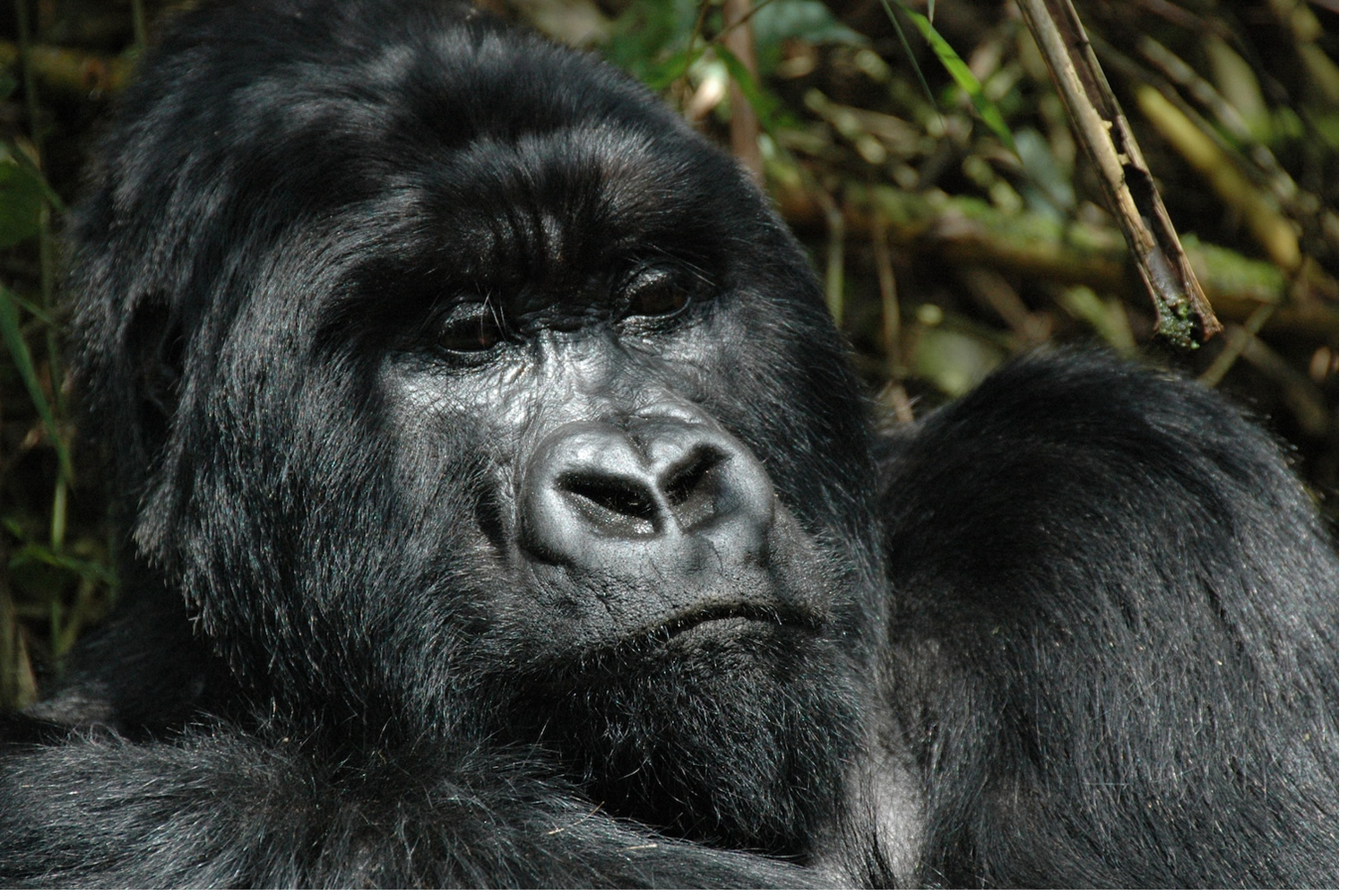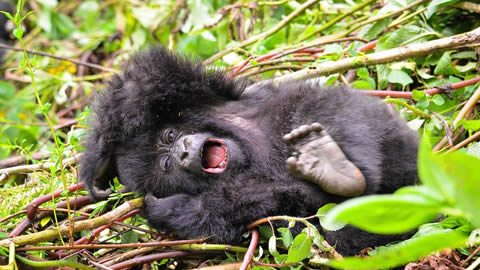[vc_row][vc_column width=”3/4″][vc_column_text]Gorilla Habituation in Bwindi Experience was introduced in 2015 in the Rushaga tracking sector the southern part of the park. The experience was basically introduced as a way of creating awareness and behind the scene of what it takes to have a fully habituated gorilla family open for gorilla tracking activity. Bwindi impenetrable forest national park is located in southwestern Uganda at the edge of the Albertine rift valley covering about 321 sq km. Bwindi impenetrable Forest became a UNESCO world heritage site in 1994 in recognition because of its unmatched biodiversity providing home to a variety of wildlife including 120 mammals, 350 species of birds, 24 being Albertine rift endemics, 400 species of plants. Note that this is the only place in the whole world where two great apes both gorillas and chimpanzees live together in harmony with man. The forest is believed to have survived the ice age about 25,000 years ago and such a pristine, unspoiled forest lying at low altitudes between 1,160 to 2,607 meters above sea level is an important area for biodiversity conservation.
Estimates say that there are about 1004 mountain gorillas left on the planet earth and interestingly about 400 mountain gorillas live in the Bwindi forest which is a half of the world’s mountain gorilla population. The other gorillas live in Rwanda and DRC’s Virunga mountains region.
Gorilla tourism in Bwindi forest National park begun in 1994 with one tourism product Gorilla tracking with one habituated gorilla family Mubare in the Buhoma tracking sector after evicting the Batwa people who occupied the forest since time memorial and now they are settled outside the park.
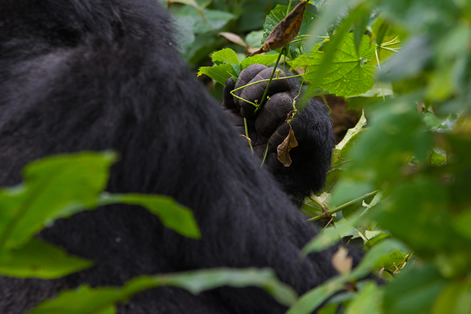 Mountain gorilla habituation, itself is a process of humanizing wild gorillas to be accustomed to human presence without altering or changing their behaviors. This can be achieved over a period of 3 years or more depending on the pace at which gorillas are getting used to humans. The process is done by experienced researchers, trackers, and few lucky tourists who know how gorillas behave and closely follow them on a daily basis by imitating their actions such as picking and chewing on the vegetation with nonthreatening bodies language. With time researchers will first put the gorillas on the test to see if they are ready for normal trekking. Therefore declaring gorillas ready for normal trekking largely depends on the readiness of gorillas during habituation, Gorilla Habituation in Bwindi, if not then the process of habituation continues until they become ready for human interaction.
Mountain gorilla habituation, itself is a process of humanizing wild gorillas to be accustomed to human presence without altering or changing their behaviors. This can be achieved over a period of 3 years or more depending on the pace at which gorillas are getting used to humans. The process is done by experienced researchers, trackers, and few lucky tourists who know how gorillas behave and closely follow them on a daily basis by imitating their actions such as picking and chewing on the vegetation with nonthreatening bodies language. With time researchers will first put the gorillas on the test to see if they are ready for normal trekking. Therefore declaring gorillas ready for normal trekking largely depends on the readiness of gorillas during habituation, Gorilla Habituation in Bwindi, if not then the process of habituation continues until they become ready for human interaction.
However, when it comes to gorilla habituation experience as a tourist product, it is where the tourists visit the already habituated gorilla family and will stay with the gorillas for a maximum of four hours observing their day’s activities and behavior. This gorilla habituation experience differs from gorilla tracking in that with the latter, a maximum of one hour is allowed to stay in the presence of the gorillas, which is a short period to have learnt the behavior of the gorillas.
Uganda Wildlife Authority, a top body managing all national parks of Uganda recently introduced gorilla habituation experience products for tourists in the Rushaga sector found in the southern section of Bwindi impenetrable forest national park, a product that is not found anywhere else in the world. Currently, there are two gorilla groups that are being visited for the habituation experience. These two gorilla habituation groups in Bwindi impenetrable Forest national park are Bikingyi and Bushaho.
A maximum number of 4 people can be allowed to participate in habituation experience contrary to the 8 people allowed on gorilla tracking. Gorilla habituation experience costs 1500 USD per person. It means that a total of 8 permits are given out daily depending on the availability of tourists interested in habituation experience.
Normally tourists are briefed very early in the morning about the rules and conduct before gorillas and of course, reminding you to dress properly for the impenetrable thickets by experienced Uganda wildlife authority guides, then slowly you enter the forests to look for the designated two gorilla groups under habituation, the four hours excludes time spent when searching for gorillas meaning that tourists spend real four hours observing gorillas in their natural habitats.
Booking for gorilla habituation permits need to be done in advance due to limited number of permits per day, yet the demand for the activity is high.
Gorilla habituation experience was acknowledged to be good for conservation of the whole gorilla population and their habitats because the proceeds from the experience partly go to conservation and supporting of local community development and educating the locals living around the park about the importance of gorillas and other wildlife. It’s well known that gorillas are prone to contracting human infectious diseases hence training gorillas to be used to humans puts them at risk but good enough the rangers have a ranger based monitoring system they use to closely monitor gorillas every day and obviously, there are other threats to gorillas such as poaching, encroachment which must be dealt with besides human diseases.
How to get there
Accessibility of Rushaga sector in the southern part of Bwindi national park is possible by public transport or by direct scheduled charter flights from Entebbe international airport or Kigali in Rwanda.
From Entebbe to Bwindi takes approximately 9-10 hours about 550 km of driving in a safari vehicle on tarmac roads that pass through beautiful terraced green rolling hills giving you insight into the rural Uganda lifestyle. However, there are several other routes but your guide knows a relatively short route. The most popular is the route that passes through Queen Elizabeth national park via the Ishasha sector where you might stop for the rare tree-climbing lions.
It is also easier to get to Rushaga in Bwindi when you are already in Lake Mburo or Queen Elizabeth national park because from these parks it takes less than 6 hours to reach Bwindi.
Alternatively tourists can fly direct from Entebbe airport or Kajjansi airfield along the Entebbe – Kampala highway using Aerolink or eagle air charter planes to Kisoro airstrip and there after drive for a short distance to Rushaga area.
Similarly, to gorilla tracking, while planning for gorilla habituation experience you need to pack water proof good hiking boots, long sleeved sweater tops or shirt, long trouser, rain coat or jacket, insect repellent, drinking water bottle, camera, extra re-chargeable batteries and a small handy back pack.[/vc_column_text][/vc_column][vc_column width=”1/4″][vc_widget_sidebar sidebar_id=”sidebar-uganda-gorillas”][/vc_column][/vc_row]







